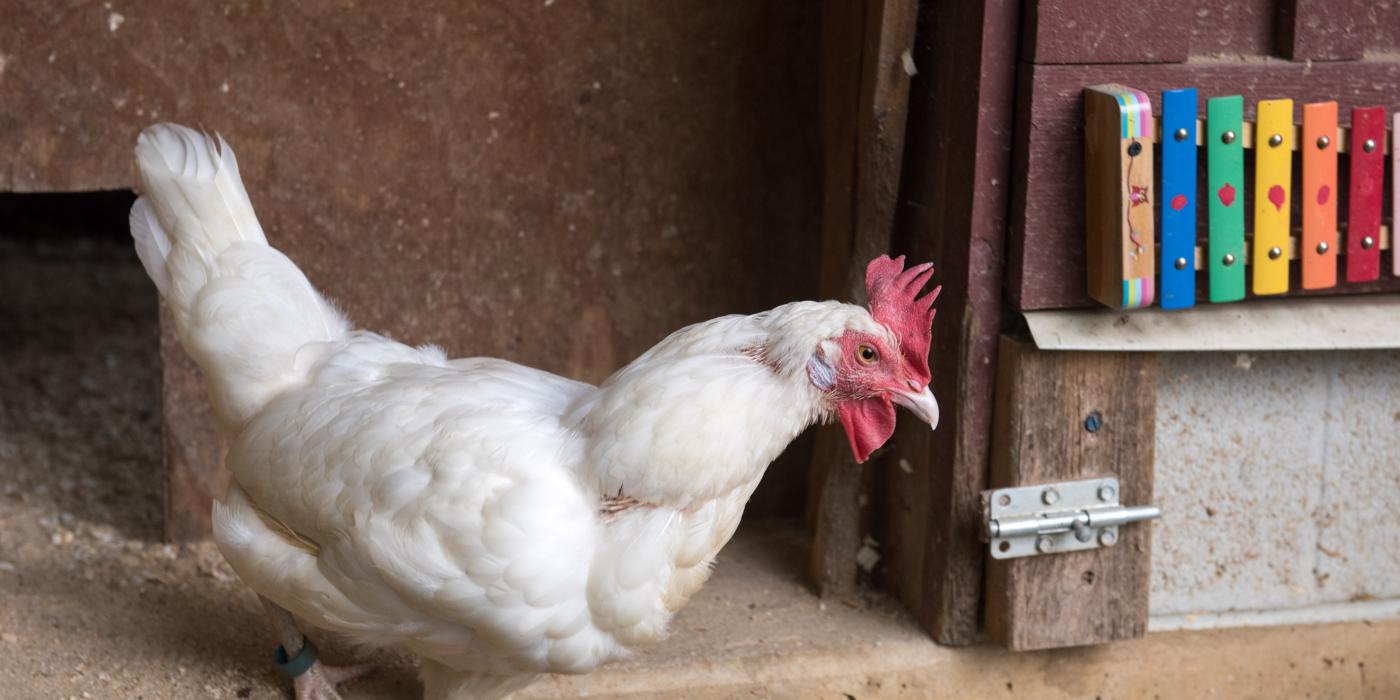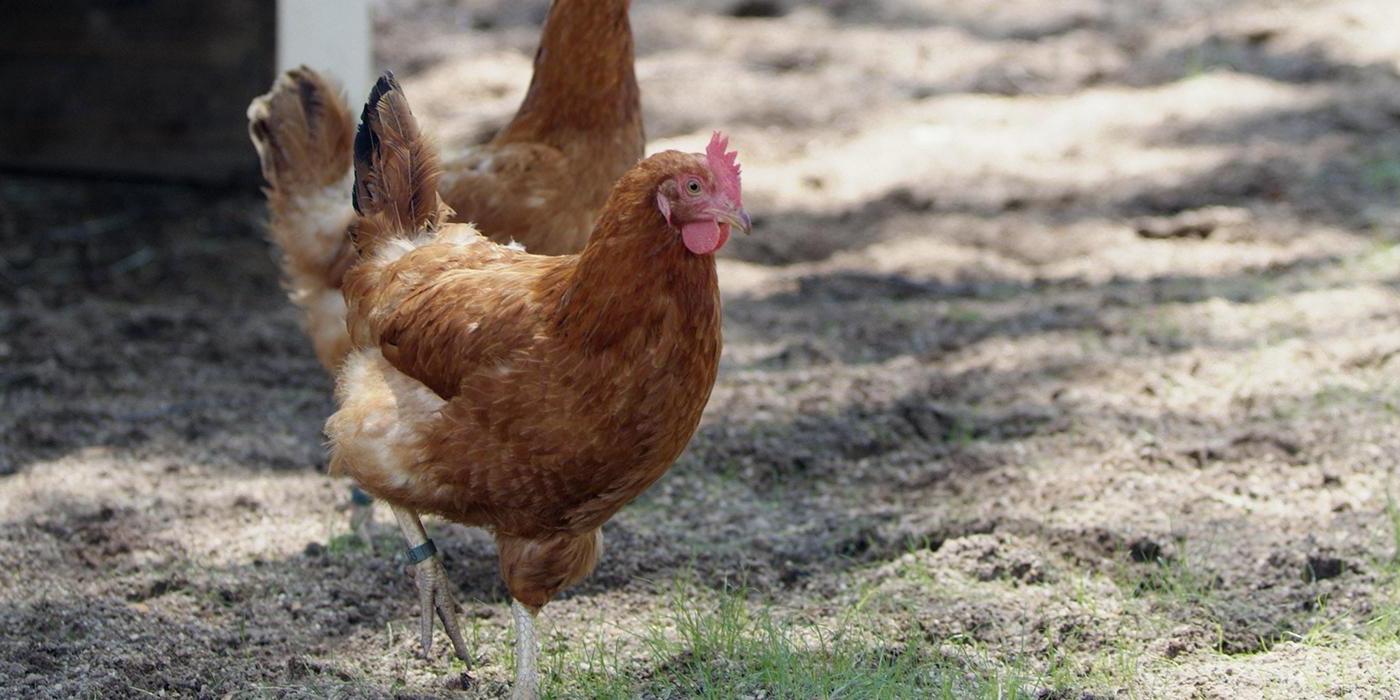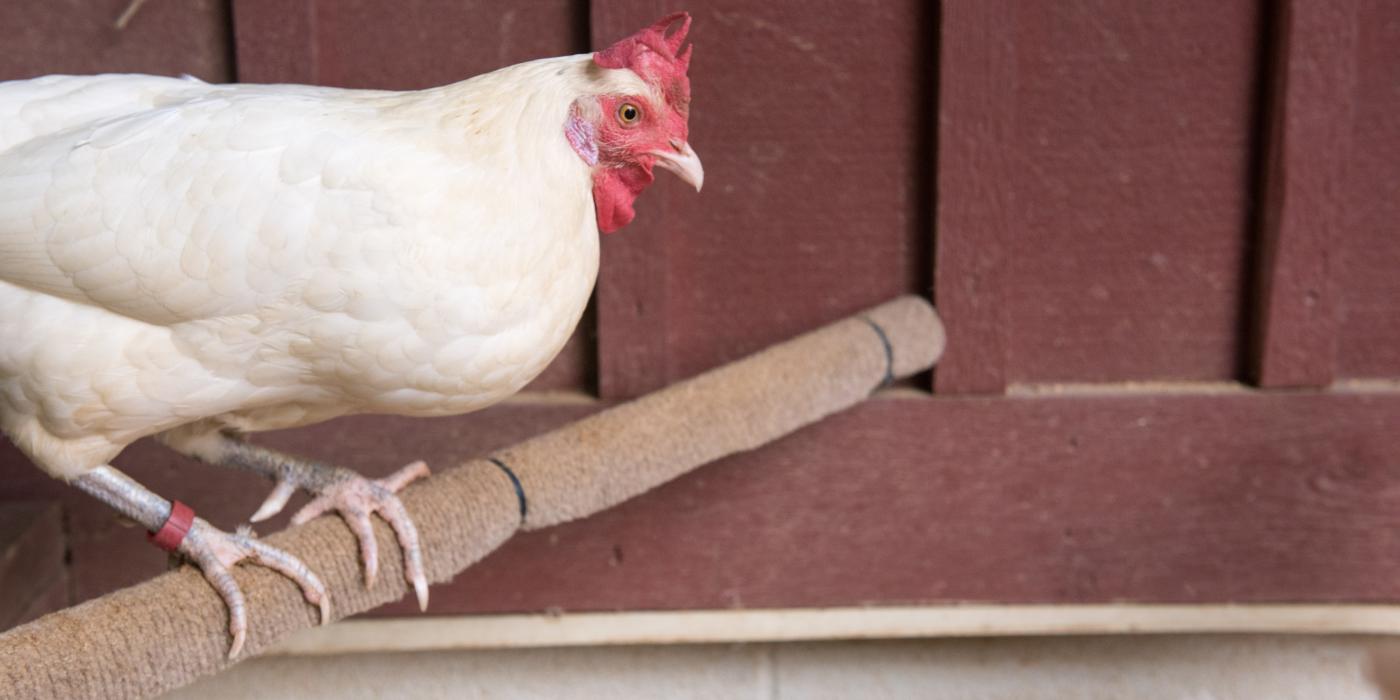Physical Description
Chickens are average-sized fowls, characterized by smaller heads, short beaks and wings, and a round body perched on featherless legs. Exact size varies greatly among breeds, as does color. In many breeds, both sexes will have fleshy skin folds on the chin and atop the head, known as wattles and combs, respectively. Chickens have four claws on each foot, which are used to scratch into the earth to find food. Males, known as roosters or cocks, tend to be larger than females, or hens, and often have more pronounced wattles and combs and more elaborate plumage.
Communication
Roosters are known for their characteristic crow. This shrill call is used to assertively communicate territory to other males. Hens will not crow, but may cluck to communicate with chicks or after laying an egg.
Food/Eating Habits
Chickens at the Smithsonian's National Zoo eat chickenfeed with added oystershell.
Social Structure
Chickens are diurnal, social animals, with one rooster and several hens making up a flock. There are more chickens on Earth than any other bird species.
Conservation Efforts
Animals at the Kids’ Farm differ from animals exhibited elsewhere at the Smithsonian's National Zoo in that they are domesticated animals and are not threatened or in danger of being threatened. But there is still a conservation story to tell. Large-scale agriculture has a big impact on the environment.
Threats
Large-scale, conventional agriculture relies on fertilizers, pesticides, herbicides and fungicides. Chemical residue in or on food poses a potential health risk to consumers, agricultural workers and animals. Large-scale agriculture also has a significant impact on water resources. Fertilizer run-off from farms (and residential neighborhoods) can create dead zones in lakes, rivers and bays. The trend toward concentrating livestock in large, centralized feedlots generates an abundance of waste products, such as manure and methane emissions.
Because there is often more waste product than can be properly handled, surrounding water sources and watersheds become contaminated. Agriculture is the biggest water consumer, using 70 percent of all freshwater withdrawals worldwide. Water scarcity is due to overuse of surface and ground water for irrigation. Agriculture can also reduce the amount of available wildlife habitat, thereby adversely impacting habitats for threatened species.
In response to many of the issues and concerns related to modern farming and agribusiness practices there has been a growing movement to direct agriculture toward more sustainable methods. Organic farming, concern for farm animal welfare and a focus on locally grown products are becoming more mainstream. In 1997, there were 800,000 acres of certified organic cropland in the U.S. In 2011, that number grew to 3.1 million acres, and organic food sales followed the same trajectory increasing from $10 billion in 2004 to $28 billion in 2012.
Help this Species
Consider going meat-free one day each week to help reduce the demand on the livestock industry and decrease your carbon footprint!
Smithsonian's National Zoo and Conservation Biology Institute. (n.d.). Chicken. Retrieved January 6, 2026, from https://nationalzoo.si.edu/animals/chicken
Animal News






